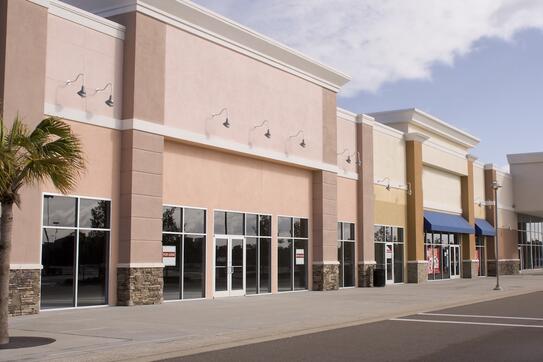In many parts of the United States, big box stores are an important source of affordable products, jobs, and tax revenue for many financially strapped areas. That’s why the competition for them can be fierce, as cities and towns try to outdo each other by offering tax breaks and other incentives.
But are those incentives all they’re cracked up to be? It’s a question assistant professor Fanyin Zheng examines in her ongoing research, which looks at why discount retailers open stores in one place and not another. “I’m interested in spatial problems and firms making strategic decisions,” she explains. “These big box retailers provide a great setting to look at these problems.”
In her 2016 working paper, “Spatial Competition and Preemptive Entry in the Discount Retail Industry,” Zheng investigates the role local government subsidies and tax incentives play in the decision companies such as Walmart make before setting up shop in a particular locale. Counter to the belief of many local governments, she finds that tax breaks and subsidies, no matter how generous, do not play a significant role in deciding where retailers build and open new stores.
Zheng’s study mined data from the mid-2000s when brick-and-mortar outlets were still thriving and Walmart had yet to close a store. But these days an increasing number of consumers are content to buy online from cyber shelves rather than venture out to actual stores, though Zheng says recent findings are unclear if the shift to the internet has affected relationships with local governments. In 2019, 22 Walmart stores have gone out of business across the US and Canada, though the company plans to open 12 stores in the next year.
As Zheng notes, many communities, particularly those in rural areas located far from distribution centers used by online retailers, big box stores continue to provide a convenient place to shop. Also, there still exist places, including many in remote parts of the country, where high-speed internet connections, which have fueled online sales in the past two decades, are not as prevalent.
“For people who have been left out, they would benefit from having a physical store nearby,” Zheng says.
Also, big boxes bring the allure of new jobs and can act as a beacon for other companies to open retail outlets in the area.
With so much at stake, communities often get into bidding wars as they vie to create conducive tax incentives to entice Walmart and others to come their town. The subsidies, according to Zheng, then become part several factors companies weigh before entering a new market.
“When firms consider whether to open a store in a particular location, they are thinking about what their competitors’ strategies are at the moment and what they are likely to be in the future,” Zheng says.
Yet the subsidies are only part of the equation, she says. “Instead, the decisions are driven by how much demand there is in the local market and how much competition there is.”
Still, the issue of incentives for big boxes remains a contentious issue around the country, as local communities continue to offer retailers tax breaks to build stores, in hopes of increasing employment and eking out revenue to fund public services. In recent years, large retailers have taken municipalities to court to force governments to lower their real estate assessments. In some cases, big boxes are demanding that their property be evaluated as vacant, the so-called “dark store theory,” with the logic holding that any future sale price would be affixed to the value of a dormant space, not an active business.
Zheng says her research does not offer a complete analysis of the wisdom of such incentives.
“There is, however, some evidence that suggests that maybe it’s not the best use of the local government’s money to subsidize big box retailers.”
